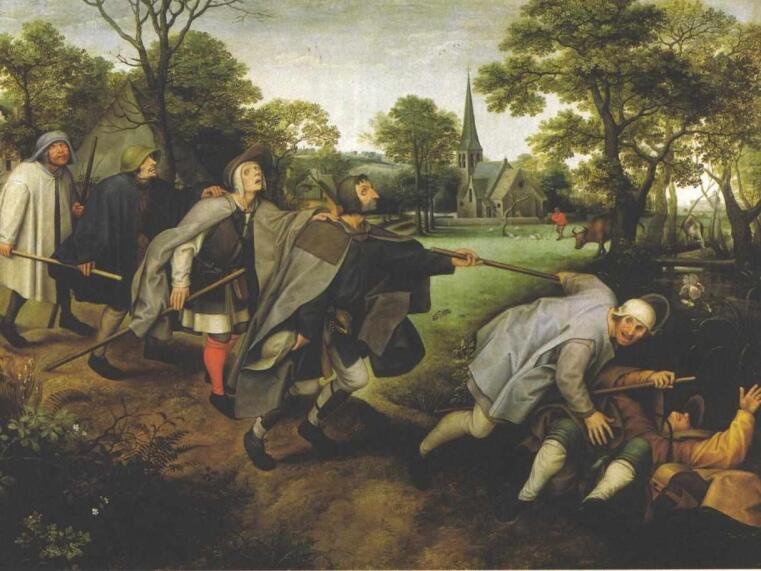Seeing through blindness. José Saramago’s novel Blindness (1995)
By literary scholar Martina Wagner-Egelhaaf

Saramago’s depressing novel with the Portuguese title Ensaio sobre a cegueira (i.e. Essay on Blindness) tells how a growing number of people in an unnamed town become infected with a mysterious disease that causes them suddenly to go blind. This is a special blindness, one that does not lead the blinded into darkness, but blinds them with glaring whiteness. “The blind man raised his hands to his eyes and gestured, Nothing, it’s as if I were caught in a mist or had fallen into a milky sea. But blindness isn’t like that, said the other fellow, they say that blindness is black, Well l see everything white” (José Saramago, Blindness, translated by Giovanni Pontiero, Vintage, 1997, p. 5). In order to stop the rapidly spreading infection (“this is not some cold”, p. 19), the authorities commit those affected to an empty mental hospital. Those who have been in contact with them are also quarantined, in another wing of the building (on the subject of ‘quarantine’, see Pia Doering’s contribution in this dossier): “The decision to gather together in one place all those infected, and, in adjacent but separate quarters all those who have had any kind of contact with them, was not taken without careful consideration” (p. 41). Soldiers guard the building and shoot anyone who comes too close to them or tries to escape. More and more blind people are crammed together, and the already poor conditions deteriorate rapidly: hygiene is intolerable, food becomes scarce, brute force begins to reign. One group seizes the food and brings the others to heel. Mass rapes take place.
A single figure remains sighted – the wife of an ophthalmologist who did not want to leave her blind husband alone and so pretends to be blind. The narrative is largely focalized through her, so that we as readers become eyewitnesses, as it were, through the wife – in the truest sense of the word, because we can see and read. If at first there are rules and instructions from the outside, these soon disappear, as do the daily food rations. We can see how the rules of civilization and human interaction increasingly unravel, and how people are thrown back to their, as Giorgio Agamben would put it, naked lives. The ophthalmologist’s wife finally succeeds in killing the ringleader of the group tormenting the others. As a result, there is a riot in the asylum that ends in a fire. The fire burns the asylum down and those imprisoned are released.
But only to find that order in the world outside has also long since collapsed; there seems to be no government left to regulate anything or to take action. Blind people wander aimlessly through the streets in search of food; dead bodies lie around; rubbish piles up. The wife manages through superhuman courage and determination to hold together the small group of those first infected who were housed in the same dormitory, to organize life together, and to ensure a minimum of humanity. How things can go on remains unclear, though, since everyone is infected and there is no longer a regulating community. And then, out of the blue, we don’t know how, the first blind person regains his sight, then the second, then the third ... That’s all that’s said. “I don’t think we did go blind”, says the ophthalmologist, who has regained his sight at the end, “I think we are blind, Blind but seeing, Blind people who can see, but do not see” (p. 309).
Blindness in Saramago’s novel is obviously a metaphor for knowledge and insights that regulate the human community, very fundamentally speaking for the distinction between ‘good’ and ‘evil’, humanity and inhumanity. The rules of human coexistence increasingly unravel in the asylum; the ophthalmologist’s wife tries to maintain them as far as possible. When the asylum burns down, it becomes clear that the outside world also no longer knows any rules or order. Anomie reigns. At the beginning of the story, confining the blind in the asylum could still be seen as a precaution taken by a government that, just like the protagonists, remains nameless in the novel. But increasingly it is the task of those shut in to organize themselves. This leads, so to speak, to hell, until the wife, who for her part must become a murderer, succeeds in turning the tide. But even after liberation, there is no longer a structuring outside, no one to take precautions and measures. If the novel has a message – and good literature does not give simple advice – then the appeal is to the individual: ordering the community is not the task of an anonymous outside or above, but must be done from within. And this requires the “responsibility of having my eyesight when others have lost theirs” (p. 238).

